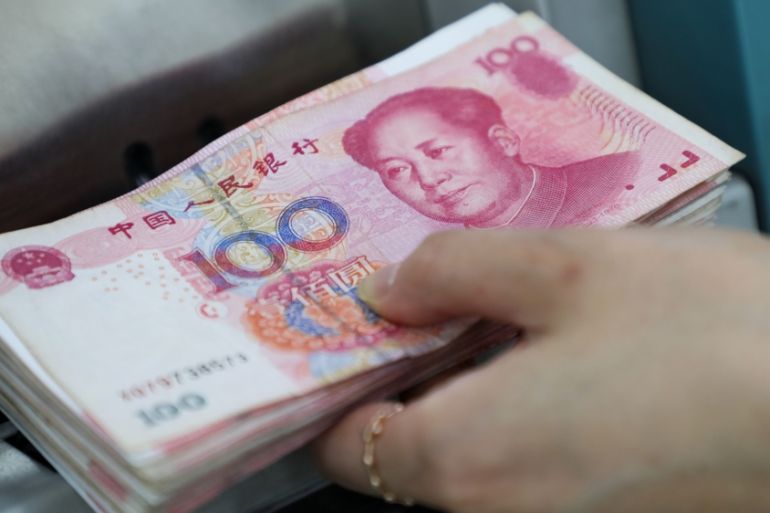China signals further stimulus coming as economic headwinds rise
IMF sees China’s GDP growing by 6.2 percent in 2019, but trade war with US could mean a slower growth rate.

China’s cabinet signaled that a reduction in the amount of funds banks have to hold in reserve is on the way while calling for “faster” lowering of the real borrowing cost for businesses, in a move aimed at funneling credit to the slowing economy.
The State Council called for the “timely” use of tools including broad and targeted reserve-ratio cuts to support the economy as well as “faster” implementation of measures to reduce real borrowing costs, according to a statement following a meeting chaired by Premier Li Keqiang on Wednesday.
Keep reading
list of 4 itemsChina’s economy beats expectations, growing 5.3 percent in first quarter
Inside the pressures facing Quebec’s billion-dollar maple syrup industry
Manipur’s BJP CM inflamed conflict: Assam Rifles report on India violence
The central bank usually follows such requests on reserve ratios from the State Council. The People’s Bank of China last made a broad cut to the required reserve ratios in January, after a similar announcement by the State Council meeting in December. The same measure was reduced for rural lenders in May.
The government also called for an acceleration of the issuance of so-called special bonds by local governments at the meeting. The bonds are mostly used to pay for infrastructure spending.
“This is the strongest loosening signal from any policy meeting year-to-date,” Song Yu, chief China economist at Beijing Gao Hua Securities Co., wrote in a report. “The expected policy measures should provide support to the real economy, reducing the risks of a dramatic slowdown in the second half,” although uncertainties remain in terms of how much loosening will be done, he said. His firm is Goldman Sachs Group Inc.’s mainland joint-venture partner.
The statement comes as a growing number of economists cut their forecasts for gross domestic product growth in 2020 to below 6% as a result of increasing risks from the tariff war with the U.S. Bank of America’s Helen Qiao and others warning that the government’s current approach to stimulus has so far proved insufficient. The earliest indicators compiled by Bloomberg showed the economy slowed further in August and manufacturing contracted further.
China Minsheng Banking Corp. researcher Wen Bin said he expects an across-the-board cut as well as a targeted cut to banks’ reserve ratios as soon as this month, while Australia & New Zealand Banking Group Ltd. economist Xing Zhaopeng said the move could come as soon as this week.
The statement underlined the increasing headwinds facing China’s economic growth. The State Council decided to expand the sectors the funds raised via local government special bonds can be invested in to include transport, energy, agriculture and forestry, vocational education and medical care in 2020.
The International Monetary Fund’s chief economist Gita Gopinath said in an interview with Bloomberg TV Thursday that future policy easing in China should be “more in the fiscal space” as opposed to monetary policy.
While the announcement of a reserve ratio cut could come at any time, if the PBOC decides to cut the RRR this month the actual reduction would likely take effect on the 15th or 25th. Along with the 5th day of each month, this is when banks adjust their holdings to ensure they are in compliance with the reserve regulations.
Sept. 15 is a Sunday this year, so the actual implementation might be delayed to the Monday if that’s the date the PBOC chooses. There is also a risk the mid-autumn holiday on Sept. 13 may delay some of the clearing work, so the RRR cut could start from Sept. 25.
“The government is aware of the headwinds that are facing the economy and wants to dampen those headwinds. It still doesn’t seem they’re interested in really shifting the dial” by moving back toward a much more expansionary policy, according to Louis Kuijs, chief Asia economist at Oxford Economics in Hong Kong. “In the background there’s still that desire not to overdo it and to err on the side of less rather than more.”